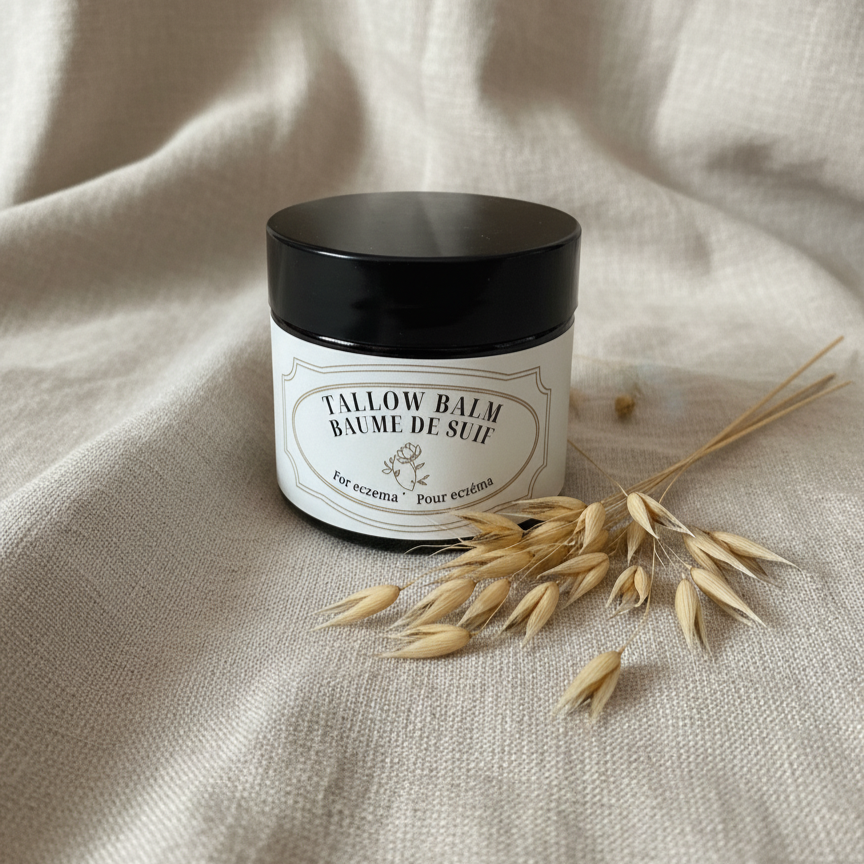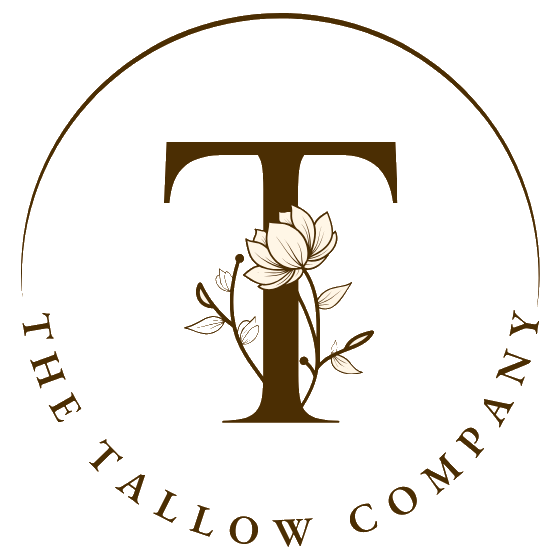The Tallow Company
Whipped Tallow Balm for Eczema
Whipped Tallow Balm for Eczema
Couldn't load pickup availability
Ingredients
Ingredients
Tallow, Hemp Seed Oil, Colloidal Oatmeal
Overview
Soothe and nourish sensitive, eczema-prone skin with our Whipped Tallow Balm for Eczema. Expertly crafted with a gentle blend of natural tallow, hemp seed oil, calendula oil, and colloidal oatmeal, this balm harnesses nature's power to provide deep hydration, comfort, and relief. Perfect for anyone seeking a natural, skin-friendly solution to dry, irritated skin caused by eczema.
Key Ingredients:
Natural Tallow
Our balm features high-quality natural tallow, renowned for its rich, moisturizing properties and compatibility with the skin's natural oils. Tallow delivers deep hydration while supporting your skin’s barrier, making it ideal for dry and eczema-prone skin.
Hemp Seed Oil
Packed with essential fatty acids, hemp seed oil helps strengthen the skin barrier, lock in moisture, and reduce the appearance of irritation. This lightweight oil supports smooth, healthy skin without feeling greasy.
Calendula Oil
Nature's gift for sensitive skin, calendula oil is rich in flavonoids and triterpenoids, which help reduce inflammation and soothe irritated skin. This alleviates common eczema symptoms like redness, swelling, and itching.
Colloidal Oatmeal
Colloidal oatmeal is a trusted ingredient for eczema care, known for its ability to soothe itching and calm inflamed, irritated skin. It provides a protective barrier to lock in moisture and maintain soft, healthy skin.
Benefits:
- Deep Moisturization: Naturally hydrates and nourishes eczema-prone skin for lasting comfort.
- Soothing Relief: Calms itching, dryness, and irritation with each gentle application.
- Barrier Support: Strengthens the skin’s natural barrier, helping protect against flare-ups.
- Safe and Natural: Made with clean, earth-inspired ingredients, free from harsh chemicals or synthetic additives.
How to Use
Gently apply a small amount of our Whipped Tallow Balm for Eczema to clean, dry skin. Focus on areas prone to dryness or irritation. Use after a shower, bath, or anytime your skin needs soothing relief and hydration.
Note: While our balm is crafted with care using natural ingredients, we always recommend patch testing before widespread use. This product is not intended to diagnose, treat, cure, or prevent any disease.
Share

Frequently Asked Questions
Is tallow balm safe for sensitive eczema-prone skin?
Yes, our tallow balm is formulated with natural ingredients, making it suitable for sensitive skin, including those prone to eczema. However, we recommend a patch test first.
Can tallow balm be used daily on eczema?
Absolutely! Our tallow balm is gentle enough for daily use, providing moisturization and comfort to eczema-prone skin.
Are there any artificial fragrances in your tallow balm?
No, our tallow balm is free from artificial fragrances, ensuring it's gentle and non-irritating for eczema sufferers.
How quickly can I expect to see results with this balm on eczema?
Results vary, but many users report feeling immediate relief from dryness. Consistent use typically shows improvement over time.

